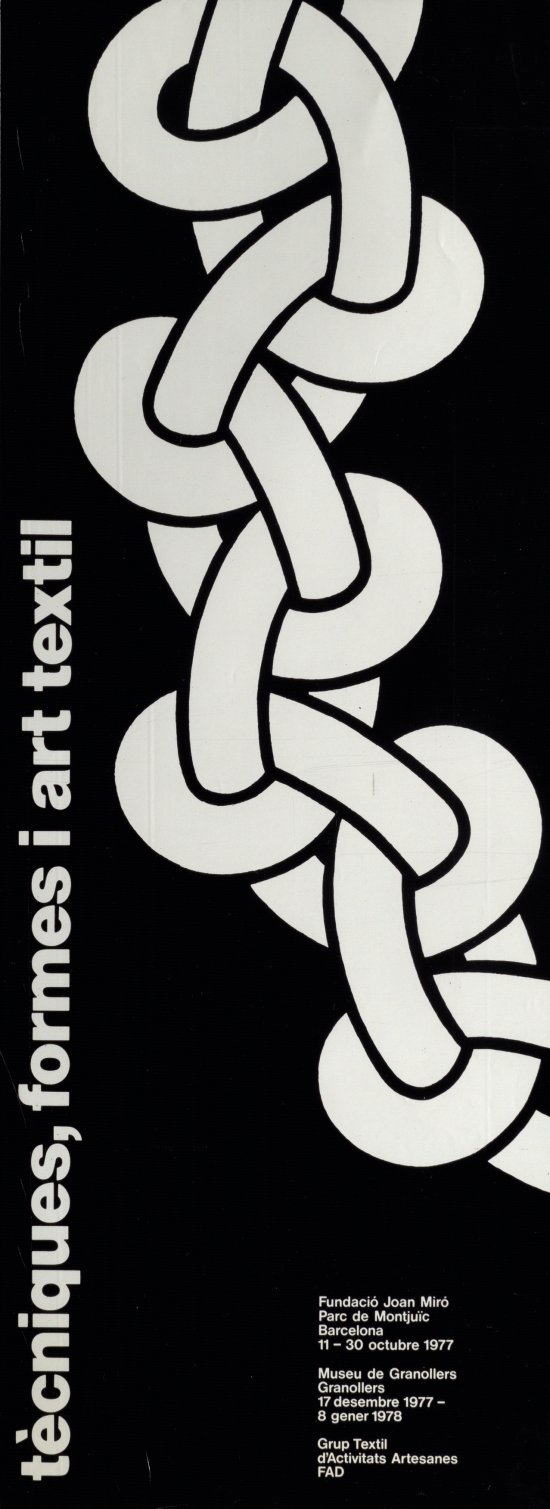- Dates
- —
Technique, Forms and Textile Art
The aim of the textile researchers of FAD’s Artisan Activities Group, in their participation in the Fundació Joan Miró, is not simply to present unrelated works, something that could be of unquestionable interest, but to show the possibilities that this artistic field currently offers.
Many innovations have been produced in recent years that have profoundly changed the concept of what is understood by ‘tapestry’, as well as a constant recovery of ancient techniques or cultures very distant from ours. It is no longer necessarily a work on a flat surface, applicable to walls, nor with materials considered noble: the sculptural field is now invaded with volume, while at the same time the materials are extended almost endlessly.
It was very convenient that all these concepts were clarified and all these recent experiences were shown in the most comprehensive manner possible. Much confusion still remains, and the idea of tapestry is still a basis, even with the social connotations it brings. This art also offers a great many possibilities at a time when others, such as painting, to which it has paid tribute, are in a crisis from which it seems difficult to emerge. One of the reasons for this renewed relevance could be found in the fact that the textile artist does not consider a total break with the past. The avant-garde – if we can use this word correctly – is trying to salvage from past traditions precisely everything that can be useful to it and, in this sense, perhaps offers a methodological model for a contemporary art. This attention to tapestry and textile productions of other cultures does not condition the actions of researchers but, on the contrary, strengthens their freedom, given that it expands technical, material and formal possibilities and, consequently, those of the aesthetic itself.
Each member of the group presents four 40 × 40 panels as a sample of their personal contribution. Besides techniques with a long tradition in our culture, such as high and low warp, as well as others that have been widely used in recent years, such as macramé and batik, less well-known experiences can be seen: patchwork, tufting and soumak. In each case, all of these techniques are the subject of a personal interpretation that places this artisan knowledge at the service of a creative purpose.
The exhibition is undoubtedly of great interest to the general public for its informative, didactic nature, but it can also be useful for those interested in art in order to learn more about the state of textile experiences through these types of AA/FAD activities, given that it brings together a large number of its best representatives.
J. Corredor-Matheos


